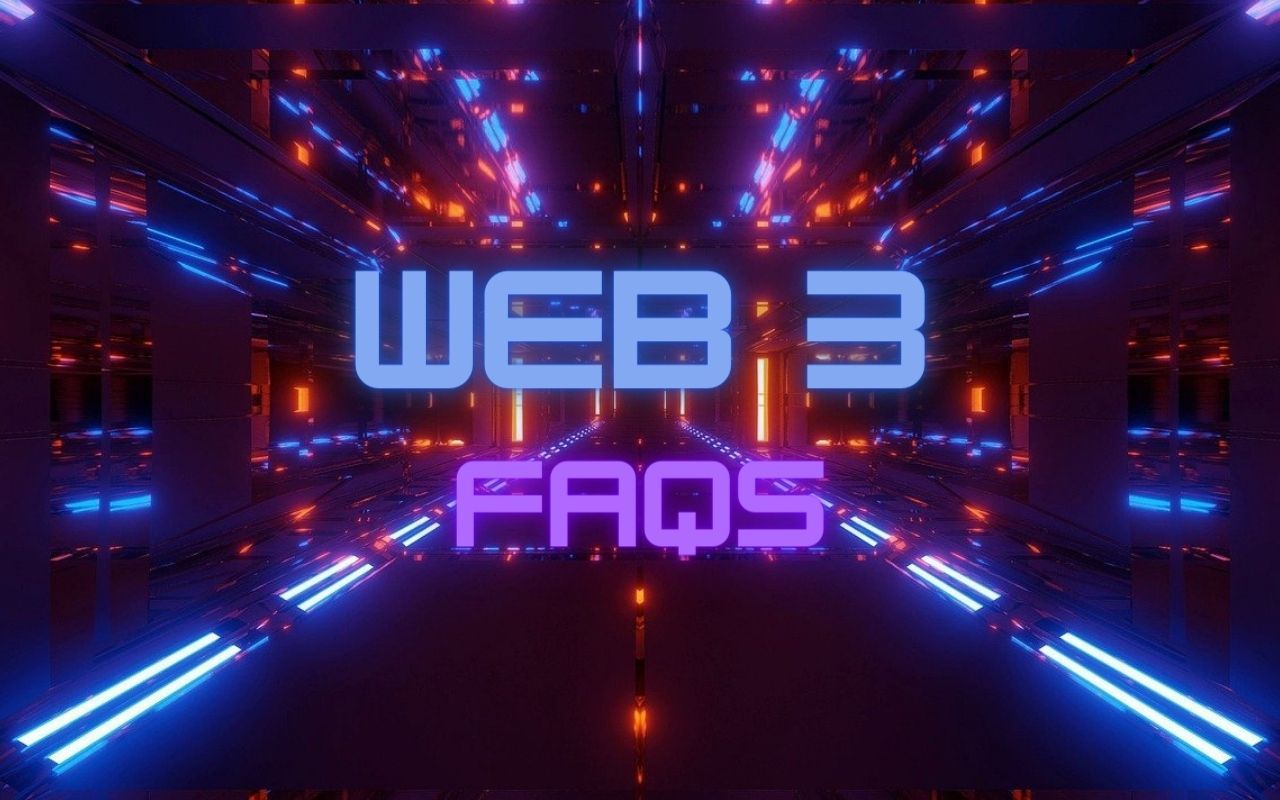Web3 FAQs

Web3 is a word that many people have heard but don't really understand its meaning.
It's easy to fall into the trap of thinking Web3 refers only to blockchain technology when other technologies are built on top of this new web development.
So if you're curious about...
What is Web3?.. How will Web3 benefit you?... and more,
… then read ahead!
What is Web3?
Web3 is the third generation of the Internet. The first generation was Web 1.0 (a one-way read-only medium) and the second generation is Web 2.0 (a read-write medium).
Web3 is a technological advancement that will soon revolutionize how we live and interact with the world around us.
However, this revolutionary technology has yet to be fully defined.
What's clear so far?
Web3 provides a decentralized, peer-to-peer (P2P) network for delivering faster user experiences with better personalization. The notable technologies underlying the development of Web 3 include artificial intelligence and machine learning in addition to semantic web capabilities.
The decentralized, peer-to-peer infrastructure followed by Web3 technologies challenges the conventional centralized approaches for creating, storing, sharing, and monetizing data.
Among the unique features of Web3 include:
§ Web3 is decentralized internet where users and developers have control over their data. Web 3 gives power back to the people by decentralizing authority -- as opposed to the first two generations of the web, where governance and applications were largely centralized.
§ Web3 is open, as it includes open-source software with the benefit of easy accessibility.
§ The Web3 networks are permissionless where everyone has equal access to participate in Web3, and no one gets excluded. And the beauty part is users and providers don’t need permission from centralized controlling organizations.
§ Web3 is a trustless environment using incentives and economic mechanisms that operate without relying on third parties. It offers freedom for users to interact privately and publicly, providing an interesting alternative to the traditional model where intermediaries are necessary to keep interactions fair among multiple parties involved.
§ Web3 also offers ubiquity that ensures the availability of the Internet irrespective of location, time, and device. For example, IoT technology can help access services through many intelligent gadgets besides voice assistants.
§ Web3 is a Blockchain-based technology that can enable decentralized applications and services. With blockchain, data across different platforms are distributed in an approach unlike centralized database infrastructure--it's more secure because there isn't one central point for hackers to get into! Additionally, it provides verifiable authenticity by recording everything on its immutable ledger, helping prove transaction activity without relying heavily upon third parties like banks or governments.
§ Web3 is cryptocurrency-enabled which is a key feature of Web3.0 services that largely replace fiat currency like dollars, euros, etc. They're more secure, faster, and easier than any other form we've seen before them.
§ The future world of Web3.0 is one where autonomous and artificial intelligence plays a significant role, with more overall use for these technologies as we move into the third era of this new internet protocol!
With Web3, users will completely control their data and can share it as they please. This is because the third generation of the Internet strives for transparency and returning the power to consumers who own all information related to them.
What are the Top Use Cases of Web3?
Web3 technology offers a whole new world of possibilities for use cases in every sector.
The notable Use Cases of Web3 include:
· Decentralized Autonomous Organizations (DAOs) – DAOs are a network of users united by a common goal and pot of funding. They operate with smart contracts on blockchains. All governance token holders in a DAO can vote and have a say in key decisions.
· Decentralized Finance (DeFi) – DeFi is an exciting new technology that allows people to take back control of their finances. Instead of relying on banks for financial transactions, they can now do so through cryptocurrency and blockchain-based methods with lower fees than the current system offers while also being free from any intermediaries.
· Non-Fungible Token (NFT) - NFT is a revolutionary new type of token that can be stored in the blockchain and represents digital identity, collectibles, or assets - which you could hold for future value, use it as a token to enter a community/event, build a portfolio of assets. It’s also a way to show or identify credentials.
· Metaverse – A 3D virtual world that provides an online space for people to socialize, learn, collaborate and play in an immersive experience using their 3D avatar.
· Decentralized Applications (dApps): dApps are digital applications that run on a blockchain network of computers and make use of smart contracts.
· Blockchain Games: Blockchain games are video games that use blockchain technologies, including cryptocurrencies and NFTs.
Note: We’ll cover extensive use cases of Web3 in our upcoming post. Stay tuned for it.
What are Web3 technologies?
There are a few and more are being created.
1. Blockchain networks (Bitcoin, Ethereum, Solana, Avalanche, Polygon, etc.)
2. NFTs
3. Cryptocurrencies
4. DApps = decentralized apps
Are Web3 and the Metaverse the same thing?
Web3 is NOT a Metaverse - though it shares some similarities, such as being built on top of the Internet.
While many Web3 protocols, such as NFTs or peer-to-peer cryptocurrency transactions may be used in the Metaverse, Web3 is not the Metaverse.
Virtual reality, apps, video games, crypto, websites, and anything powered by the Internet can be considered the Metaverse.
The Metaverses are typically much larger and more complex than Web3. They also tend to have their ecosystems and economies, whereas Web3 primarily focuses on decentralized applications.
The Metaverses are usually designed for social interaction and gaming, whereas Web3 is geared more towards business and commerce as a decentralized version of the internet.
What are the Challenges in Web3?
The development of Web 3 is not without its challenges.
The Web3 infrastructure is still in its early stages of development. This means that few tools and services are available to help users easily interact with decentralized applications.
There is also a lack of user education when it comes to understanding how to use decentralized applications. Many people remain skeptical about blockchain technology and its ability to revolutionize how we interact online. It can be challenging for newcomers to comprehend.
There is a need to make more environmentally friendly technology because current technology has a much higher carbon footprint than its predecessor.
With the transition to Web3, many laws had to be changed to ensure security and ownership of something.
Moreover, Web3 will be inaccessible to less advanced devices.
Lastly, security is a major concern for Web3 applications. The Web3 space is still very much a Wild West, filled with bad actors. Developers need to take steps to ensure the safety and privacy of their users' data. As a user, without reliance on a centralized authority, you are fully responsible for keeping your data and currency safe. This means practicing proper wallet safety, constantly being alert for phishing schemes, and never giving out the seed phrase of your wallet.
How will Web3 benefit our lives?
The internet is changing! Web3, a new version of the web that's going to be based on three essential principles:
Decentralization - no central authority controlling it all.
Data ownership - giving users control over the data they own.
Privacy – enable users to maintain control of personal data themselves.
Web3 also will provide a far richer experience for users.
We hope you’ve got your burning questions about Web3 answered here.
In summary,
Web 3.0 is an important advancement that will help to improve the Internet as we know it!
With every new development, you should stay up-to-date so your knowledge doesn't lag in this ever-changing world of technology.
If you’re interested to find out how you can enter our C21 Metaverse, please contact Ms. Kate via WhatsApp.
Connect with us at Consortium 21 Telegram channel for the latest news and updates about Metaverse development, giveaways, experts insights, and more!
